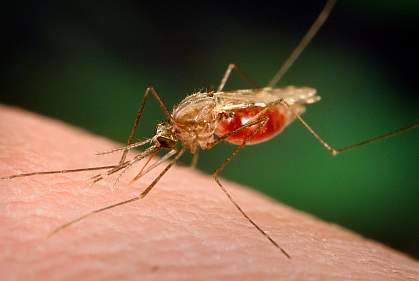Over 247 million cases and 619,000 deaths of malaria were reported in 2021. It’s clear that there is an urgent need for new antimalarial drugs, and a key goal is to prevent parasite spread by blocking their passage from human to mosquito, which depends on the sexual phase of the parasite life cycle. Researchers at the Baum laboratory along with colleagues at Imperial College London, U.K., previously identified a new class of potent antimalarial compounds, belonging to a family of sulphonamides. In a new study, the researchers explored exactly how these compounds work.
Their findings are published in Disease Models & Mechanisms in an article titled, “A novel class of sulfonamides potently block malaria transmission by targeting a Plasmodium vacuole membrane protein.”
“Phenotypic cell-based screens are critical tools for discovering candidate drugs for development, yet identification of the cellular target and mode of action of a candidate drug is often lacking,” wrote the researchers. “Using an imaging-based screen, we recently discovered an N-[(4-hydroxychroman-4-yl)methyl]-sulphonamide (N-4HCS) compound, DDD01035881, that blocks male gamete formation in the malaria parasite life cycle and subsequent transmission of the parasite to the mosquito with nanomolar activity.”
The lead author of the work, Sabrina Yahiya, PhD, commented: “Targeting parasite transmission from human to mosquito and back again is pivotal if we hope to reach the goal of worldwide malaria elimination. If you only treat one symptomatic patient, you address their symptoms but neglect the issue of malaria spread. By limiting transmission, however, you can radically curtail the spread of malaria across a population.”
The researchers started by growing human red blood cells infected with the malaria parasite in the lab, then manipulated the parasites to enter their sexual life stage. The scientists then treated these parasites with one of the sulphonamide compounds to find out which parasite proteins were being targeted by the transmission-blocking compounds.
Using the approach “click chemistry,” the researchers found out which parasite proteins were being targeted by the transmission-blocking compounds and then tagged any parasite proteins that came in contact with them. They identified a parasitic protein called Pfs16 as forming the strongest bond with the drug. Interestingly, Pfs16 is important for sexual conversion of the malaria parasite. The team then performed additional experiments to confirm that the sulphonamides bind Pfs16 and, importantly, block its function.
The scientists then wanted to pin down the exact point in the parasites’ sexual phase that was being targeted by the sulphonamides. The authors found that the sulphonamide compounds specifically targeted male parasites and uniquely inhibited their sexual maturation if administered to the parasite within the first 6 minutes of the sexual
maturation process.
Overall, Baum and colleagues have identified how this new class of antimalarials blocks the
parasite reaching sexual maturity, and therefore, their spread from human to human via a
mosquito bite.
Their study is a critical step in developing effective new drugs to reduce the massive number of new malaria cases worldwide.


